The whole Everglades system — which runs from just south of Orlando to the Florida Keys — was left waterlogged by heavy rainfall...
Join our family of readers for as little as $5 per month and support local, unbiased journalism.
Already have an account? Log in to continue. Otherwise, follow the link below to join.
Please log in to continue |
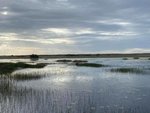
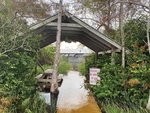
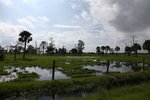
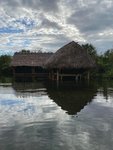
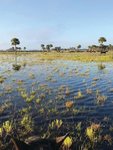
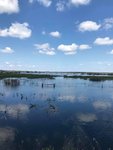
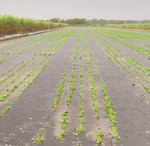
The whole Everglades system — which runs from just south of Orlando to the Florida Keys — was left waterlogged by heavy rainfall in October and this month by Tropical Storm Eta.
Water sheetflowed through pastures north of the lake. South of the lake, sugar mills had to close. In coastal urban areas streets were flooded.
The heaviest rainfall and the worst high water issues are in the vast Central Everglades between the Everglades Agricultural Area and the Tamiami Trail.
“There was a lot of rain; as a result of that rain, there was flooding,” Chief District Engineer John Mitnik told the South Florida Water Management District (SFWMD) Governing Board at their Nov. 12 meeting. “We’ve got more water than we have places to put it.”
March 2020 was the driest month in an 89-year period of record, he explained. But May brought an excess of rain. October and the first part of November brought “extraordinary rain,” he said.
In the last six months, the district had 50.35 inches of rain. In October, the district (which includes 16 counties from Orlando to the Florida Keys) averaged 174% of average rainfall.
For the wet season to date, the district had 132% of average rainfall, he said.
When Tropical Storm Eta came through, “the skies have opened up and we have an excess of water in the system, about 12 inches district wide,” he said.
The water conservation areas (WCAs) south of the lake were already suffering from high water levels before the storm hit. “Tropical Storm Eta didn’t do us any favors,” said Mitnik. He said the water level “shot up like a rocket,” close to the record.
“We’ve had an event that pretty well devastated South Florida,” said SFWMD Governing Board member Ron Bergeron.
“We had 15 inches (of rain), 18 inches in some areas.
“We’re in serious trouble in the Everglades,” he said.
“The deer islands are underwater,” he said.
“In 1995 they had a mercy killing,” recalled Governing Board member Jacqui Thurlow-Lippisch. “They had to go in and shoot the deer because they were starving.
“It’s terrible,” she said. “It’s wrong.
“Isn’t there something we can do?” she asked.
Eric Sutton of the Florida Fish and Wildlife Conservation Service said there is very little that can be done to help the wildlife in the areas of the Everglades suffering from high water levels.
He said the deer herd is smaller than it was in 1995. He said the animals in this area have a lot of resiliency as the system has natural wet and dry periods but “due to the artificial nature of the plumbing, the highs are higher and the lows are lower.”
He said the deer are just one indicator for a number of species, including some endangered species. “FWC has been managing lower (deer) populations until we are in a position to manage water levels compatible with the wildlife,” he explained.
“They can only live on the levee so long,” said Bergeron.
Even wading birds are impacted, Bergeron said. “The birds don’t have legs 4 feet long.”
In addition, native plants are endangered by the high water, said Sutton.
“I have always felt that if you take care of the health of the ecosystem ... that will translate to having a healthy environment for the humans,” said Betty Osceola of the Miccosukee Tribe of Florida. She said they need to start north of the lake and continue all the way to Florida Bay.
“We’re suffering in the central part,” she said.
Over the past week, Osceola has surveyed the Central Everglades by airboat, documenting the damage. She said the native camps are flooded. She’s also taken photos for some of the owners of private hunting camps.
She’s troubled because she has seen very little wildlife. The few animals she has seen are crowded into levees, docks and anything they can find to get out of the water. There have been sightings of turtle eggs floating away.
Water is lapping at the edge of the pavement of the Tamiami Trail near the Miami-Dade/Collier county line. The Big Cypress Preserve is flooded both north and south of the trail, but the water is stacked up higher to the north, she said.
For many years, the tribe has stressed the need for more ways to get water under the Tamiami Trail. The culverts in the Big Cypress Preserve area haven’t been maintained for years, she added. The restoration plans will move more water south, but they can’t handle the water they have north of the Tamiami now, she said.
Increased development in urban areas has made the flooding problems worse, Osceola explained, because the SFWMD canals that otherwise could transport water from the Central Everglades to the ocean are filled with runoff from the urban areas. The water managers can’t use the canals to move water from the Everglades to tide until the flooding in the coastal urban areas subsides.
Current predictions call for the water to stay high in the WCAs until January or February, she said. That would be a death sentence for the tree islands, which are sacred grounds to the Miccosukees. The scientists say if the tree islands are inundated by water for more than 60 days, the tree roots holding the islands together start to deteriorate, Osceola explained.
The Miccosukees have lived in the Central Everglades “before Florida was Florida,” she said. “The tree islands are our homes, sacred sites to my people.”
The Everglades, often described as a “River of Grass,” is not supposed to be wet all year round, she said. It needs cycles of dry-downs and reflooding.
She said the general public doesn’t seem to understand the need for a healthy ecosystem in the Everglades. “They can’t keep flooding these areas and expect wildlife to flourish.” The system should be managed for the health of the ecosystem, she explained. When you put human desires first, “you get this devastation we have now,” she said.